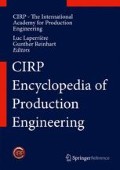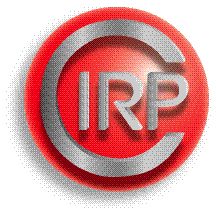Access this chapter
Tax calculation will be finalised at checkout
Purchases are for personal use only
References
Bare JC, Hofstetter P, Pennington DW, de Haes HA U (2000) Life cycle impact assessment midpoints vs. endpoints: the sacrifices and the benefits. Int J LCA 5(5):319–326
Bare JC, Norris GA, Pennington DW, McKone T (2003) TRACI: the tool for the reduction and assessment of chemical and other environmental impacts. J Ind Ecol 6(3–4):49–78
Brand G, Braunschweig A, Scheidegger A, Schwank O (1998) Weighting in ecobalances with the ecoscarcity method: ecofactors 1997. BUWAL (SAFEL) Environment series no. 297, Bern
EC-JRC (2011) Recommendations based on existing environmental impact assessment models and factors for life cycle assessment in European context. ILCD handbook – international reference life cycle data system, European Union EUR24571EN. Retrieved from http://lct.jrc.ec.europa.eu (accessed 20 August 2013)
Goedkoop MJ, De Schryver A (2009) Fossil resource, Chapter 13. In: Goedkoop M, Heijungs R, Huijbregts MAJ, De Schryver A, Struijs J, Van Zelm R (2009) ReCiPe 2008: a life cycle impact assessment method which comprises harmonised category indicators at the midpoint and the endpoint level. Report I: characterisation, 1st edn. Retrieved from http://www.lcia-recipe.net (accessed 20 August 2013)
Goedkoop MJ, Spriensma R (2000) Eco-indicator 99: a damage oriented method for lifecycle impact assessment, methodology report (update Apr 2000)
Guinée JB, Gorrée M, Heijungs R, Huppes G, Kleijn R, de Koning A, van Oers L, Wegener Sleeswijk A, Suh S, de Haes HA U, de Bruijn JA, van Duin R, Huijbregts MAJ (eds) (2002) Handbook on life cycle assessment: operational guide to the ISO standards, Eco-efficiency in industry and science. Kluwer Academic Publishers, Dordrecht
Hauschild M (2005) Assessing environmental impacts in a life cycle perspective. Environ Sci Technol 39(4):81A–88A
Hauschild M, Potting J (2005) Spatial differentiation in life cycle impact assessment: the EDIP2003 methodology. Environmental News no. 80. The Danish Ministry of the Environment, Environmental Protection Agency, Copenhagen
Hauschild MZ, Wenzel H (1998) Environmental assessment of products, vol 2, Scientific background. Kluwer Academic Publishers, Hingham
Hauschild MZ, Goedkoop M, Guineé J, Heijungs R, Huijbregts M, Jolliet O, Margni M, De Schryver A, Humbert S, Laurent A, Sala S, Pant R (2012) Identifying best existing practice for characterization modelling in LCIA. Int J LCA 18(3):683–697
ISO (2006) ISO 14044:2006 environmental management: Life cycle assessment: requirements and guidelines. International Standards Organization
Itsubo N, Sakagami M, Washida T, Kokubu K, Inaba A (2004) Weighting across safeguard subjects for LCIA through the application of conjoint analysis. Int J LCA 9(3):196–205
Jay S, Jones C, Slinn P, Wood C (2007) Environmental impact assessment: retrospect and prospect. Environmental Impact Assessment Review 27(4):287–300
Jolliet O, Margni M, Charles R, Humbert S, Payet J, Rebitzer G, Rosenbaum R (2003) IMPACT 2002+: a new life cycle impact assessment methodology. Int J LCA 8(6):324–330
Steen B (1999a) A systematic approach to environmental priority strategies in product development (EPS): version 2000-general system characteristics. CPM report 1999(4). Chalmers University of Technology, Gothenburg
Steen B (1999b) A systematic approach to environmental priority strategies in product development (EPS): version 2000-Models and data of the default method. CPM report 1999(5). Chalmers University of Technology, Gothenburg
Author information
Authors and Affiliations
Corresponding author
Editor information
Editors and Affiliations
Rights and permissions
Copyright information
© 2014 CIRP
About this entry
Cite this entry
Hauschild, M. (2014). Environmental Impact Assessment. In: Laperrière, L., Reinhart, G. (eds) CIRP Encyclopedia of Production Engineering. Springer, Berlin, Heidelberg. https://doi.org/10.1007/978-3-642-20617-7_6606
Download citation
DOI: https://doi.org/10.1007/978-3-642-20617-7_6606
Published:
Publisher Name: Springer, Berlin, Heidelberg
Print ISBN: 978-3-642-20616-0
Online ISBN: 978-3-642-20617-7
eBook Packages: EngineeringReference Module Computer Science and Engineering


